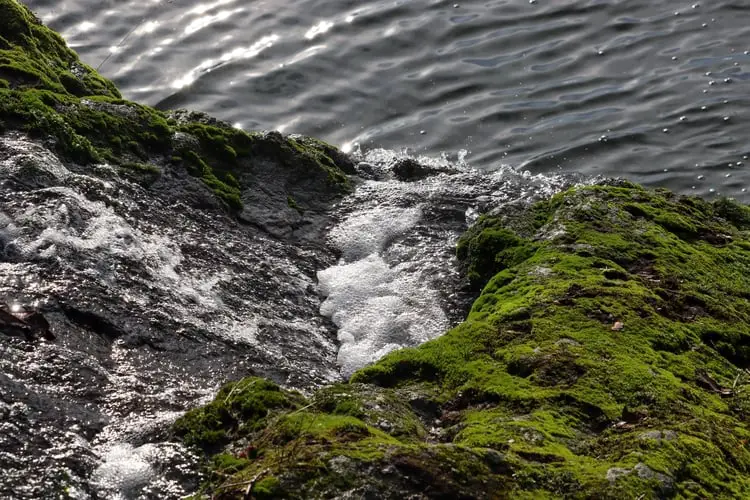
Algae eaters are a great way to get rid of algae in your tank. They will graze on the plant and consume it so that it would not grow back as quickly and cause problems down the line for other inhabitants in the aquarium.
Aquarists who keep turtles have a lot of trouble finding compatible Algae eaters for the former. Turtles will eat just about any fish they can, as long as they are smaller and not fast enough to escape them.
Can algae eaters live with turtles in the same aquarium? Really, can they?
Well, not many algae eaters can survive more than three days tops in a fish tank with turtles. The fish will not even have time to clear some of the algae for you. It is not a lost cause altogether. You can still get away with having turtles and algae eaters in the same tank.
There are a few that can live in a turtle tank. Generally, It comes down to the algae eaters’ size and agility.
This article will recommend two algae eaters that can best live with turtles- and survive. Continue reading to find out more!
Which Algae eater can live with turtles?
As mentioned before, size and agility factor significantly in the survival of algae eaters in a turtle tank. It is either they are too big or too fast for turtles to feast on them.
With these factors in mind, here is my recommendation:
Common Plecos
One of the most common freshwater fish in America and one of the best algae eaters in an aquarium is a Hypostomus plecostomus. They are also known as sucker-mouths because they use their suction cups on their head to attach themselves to surfaces like rocks, plants, or the glass sides of tanks. They have lots of different colors and sizes but are most often brown or black.
Plecos have callous skin and can grow over 15 inches long. Their sizes and tough skin make them the best choice to live in a turtle tank eating algae. Common plecos have a lifespan of about 20 to 30 years. So if they can survive a fight with turtles, they may be a long-term solution for algae.
However, this is not a rosy solution. Common plecos stand the best chance to survive in a turtle but not without a fight from the turtles. You might end up with a seriously injured suckermouth if nipping and snapping from the turtles get ugly. The first few days in the same tank are usually the most dangerous. Plecos who survive that will probably stay in your tank for long.
Chinese algae eater
Being so small, Chinese algae eaters have no chance against turtles. Well, that would be undisputable if they were not very fast. They can easily escape a turtle if the need arises.
The only problem is that they are not very good at eating algae as they age. They will eat leftovers or anything they can eat, but they will not deal with algae. They also become very aggressive with age.
Thoughts
Chinese algae eaters and plecos are the only species I can recommend if you have live cleaners in your tank. Besides, there are too many ways of dealing with algae blooms in aquariums. Ways that will save you the trouble and burden of wondering when you will have to replace your live cleaners.
Alternative ways of dealing with algae
Turtles tanks have a lot of factors that contribute to the growth of algae. The common ways to rectify are minimal since you have to account for the needs of the turtles.
There are still ways you can go about it to avoid using live eaters. Here is a breakdown of what you can do about algae in turtle tanks:
Clean the tank
The most effective way is by wiping and scraping the surfaces filled with algae. You can also vacuum your gravel substrate to remove organic matter that can support the growth of algae.
Light
Light is the other significant contributor to algae growth. Turtles need a lot of light. Even so, it would be best if you did not allow direct sunlight or bulb light to be on turtles tanks more than necessary. Intense light will only encourage algae to grow much more than you can control.
Feeding
Do not feed turtles more than they require to thrive. Controlling algae growth means controlling the amount of organic matter going into the tank. Overfeeding increases the amount of waste matter produced. Hence, on decay, algae will have a higher chance of growing.
You should also ensure that you remove or scoop out any leftover food in the tank. It will not do away with algae completely, but it will minimize algae’s growth rate.
Phosphate and nitrates
Phosphates and nitrates cause you more harm than good. Algae thrive on phosphatic nutrients. Therefore, limit the levels of phosphates and nitrates in your turtle tanks.
You can achieve that by not skipping your 10% to 20% weekly water change. Furthermore, it would help if you only used filtered or treated tap water for water changes. In case the phosphate level is too high, use phosphate removing chemicals to bring the level down.
Conclusion
Algae eaters are good at controlling the growth of algae in aquariums. If you must have them for a reason or two, consider getting common plecos or Chinese algae eaters.
Where you can do without them, try considering some of the suggested ways of controlling algae in turtle tanks.

Jesse is the principal author of this blog. He is an avid fishkeeper with rich experience spanning several years. He is here to share his knowledge and ensure you also have a guiding compass, as he did with his father.